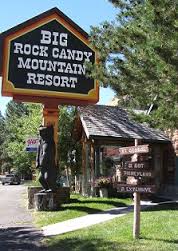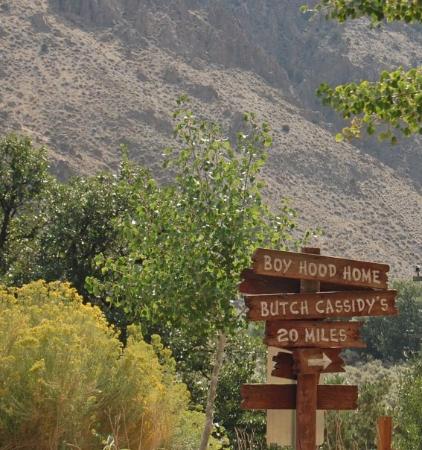 |
| Poem on gravestone (below) |
If you received this blog in your e-mail, click here to go to the blog site
September 14, 1884 - Junction
Day 13 of 44 - (Week 3)
Junction to Junction = 0 Miles (Total Miles = 251 Miles)
Total Trip Average Miles Per Day = 19.3
Miles Per Day
Week 1 = 20.2
Week 2 = 21.7
Week 3 = 0.0
 |
| September 12 - 14, 1884 |
 |
| September 14 - 15, 1884 |
Original Journal Entry
"Sunday 14 - Sunday Johny McClaws and and others came from arizona we got a good deal of information from them, about the road. Harris folks was very good to us." (Added at the top of page): Allen administered to Anna got well.
Final Journal Entry
"Sunday Sep. 14 layed over here. Sunday John McLaws and Allen from St. Joseph Arizona arrived. Received much information about the road. Anna M. had a severe cough. She would cough all night. Allen administered to her, it left her immediately. Harris folks very good to us."
Grandpa Anderson did not usually comment on people, but here he used the words "very good." Charles expressed gratitude in general at other places in his journal, but this time it was for a specific family.
(Click on green for records)
"Despite their remote location and primitive surrounding, Charles Harris was widely respected for his impeccable manners, his skills in oratory and debate, and his strict honesty................ In 1887, Charles moved his family to Richfield to improve social opportunities."
A closer look at the gravestone of Charles Harris, presented the opportunity to become better acquainted with this good man (and his family). See previous blog.
 |
| Gravestone of Charles Harris (1834-1916) |
MY PIONEER FATHER
Charles Harris
July 2, 1834
February 3, 1918
by son Silas A.
The Piute reservoir in sullen mood
Has buried deep the paths this good man sought.
Its dark, persistent, ruthless, dashing waves
Have ground to shreds the monuments he wrought.
Has buried deep the paths this good man sought.
Its dark, persistent, ruthless, dashing waves
Have ground to shreds the monuments he wrought.
No more the mark of plow or axe or saw
Proclaim his matchless energy and skill.
Deep hid forever from mortal gaze
The works of his strong hand and mind and will.
Proclaim his matchless energy and skill.
Deep hid forever from mortal gaze
The works of his strong hand and mind and will.
But works of hand were not his highest goal
If perish they, why grieve that they are gone?
His boundless acts of faith and hope and love
Fruits of noble life live on and on.
If perish they, why grieve that they are gone?
His boundless acts of faith and hope and love
Fruits of noble life live on and on.
Yes Charles Harris was a very good man as Charles Anderson said.
This was not only the opinion of Charles but of his family and peers.
Who Was John (Johny) McClaws?
About the same time the Anderson and de la Mare Families were leaving Grantsville for Arizona, the John and Sophia McClaws Family had loaded up their wagon and were heading to Utah. They crossed paths in Junction. Sophia de la Mare McClaws was the half sister to Philip de la Mare. They were both children of Philip de la Mare from different mothers. They had not seen each other in 8 years. As newlyweds, the McClaws had been called to Arizona in 1876 when Sophia was 18 and her husband John 23. More of their story which relates to the Anderson story as well is found here in the John and Sophia McClaws booklet There are also some interesting pictures.
The McClaws and Phillips families "took" dinner. Today was the 32nd birthday of John McClaws. The John McClaws Journal (pg 127) records this day when Phillip and his half sister Sophia were reunited once again (be patient if waiting for journal entry on computer)
 |
| John and Sophia de la Mare McClaws |
Below is a later interview by Rae Kirkham on Sophia De La Mare McLaws:
 |
| Sophia De La Mare McLaws Interview |
Who Was Allen? First Name? Last Name
The first and last name of John McClaws was recorded. After all John's wife, Sophia, was the half sister to Philip de la Mare, who traveled with the Andersons to Arizona. On the other hand, Allen recorded in the Original Journal Entry as a note at the top of the page. The name "Allen" was mentioned in the Final Journal Entry. It was not even known if Allen was a first or last name. I am just grateful the name was recorded, and I hope Grandpa Anderson is not upset with my joking a little on the subject. Because he left out a first or last name (I didn't know at the time) that sent me off on a research project.Fortunately it was not difficult to find that Allen was Captain William C. Allen who had actually led the group to Arizona which included John McClaws in 1876.
The John and Sophia McClaws booklet said that Sophia and John traveled with a group led by William C. Allen. The group consisted of 47 men, 1 women, and 3 children. After 9 weeks of difficult travel, their new home would come to be known as Joseph City, Arizona. The paragraph from the booklet told of their trip back to Utah.
 |
| McClaws Booklet |
 |
| William Coleman Allen |
 |
| Lovina Smith Allen |
Lovina Smith Allen's history mentions the Allen family returning to Utah in 1884 after his father was gored to death by an angry bull at his home in Draper, Utah. He was named to settle his father's estate. They decided now to return to Draper and make their home feeling their mission had been a successful one. This history tied them into the Allen mentioned in C. P. Anderson's Journal
In his Final Journal Entry Charles included that two year old Anna M had a severe cough and had coughed all night. William Coleman Allen administered to her and the cough left her immediately.
Note: This day had been a good one for the Andersons. Their little girl, Anna M had recovered. They met the McClaws and Allen families. They had a day to rest and found out about the road ahead.
No doubt that conversation included the story of the Allen family crossing the lower ferry just nine days before. At that same time a strong wind blew in heralding another storm. The mother and children were so frightened of the precipitous road they refused to ride in the wagon and got out and walked (crossed Sept. 5). This was a representative climax to their trying Arizona Adventure. ("History of W. C. Allen," 7 University of Arizona Special Collections). In 1884 the water level at one point had risen higher than the ferryman had ever seen it. (Lee's Ferry by P.T. Reilly, pg. 99-100). In thirteen days the Anderson family would cross Lee's Ferry. Hopefully the water level would go down even more and their crossing would not be too difficult.
Tomorrow the Andersons would go through Circle Valley (Circleville). In 1884 the same year, they passed through, the story of the man pictured below really started. He became a legend, not only in the local area, but throughout the country. Historians are still trying to finish his story. The Andersons stopped near where his family lived in 1884 and "turned out the horses."




































